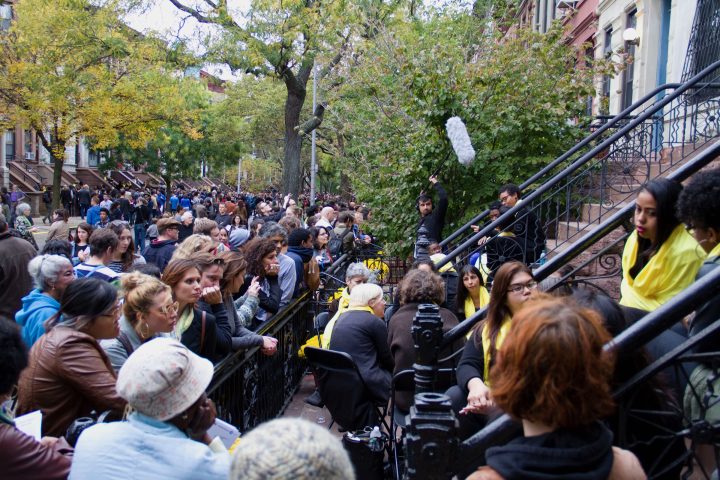
An unprecedented number of anti-riot bills have swept through 34 state legislatures in 2021, taking up the task of defining “riot” and determining the repercussions of riotous behavior. The most aggressive of these bills is Florida’s Combatting Public Disorder Act, otherwise known as the Florida “anti-riot” law. This law has significant consequences for artists and organizers involved in social practice.
Florida’s “anti-riot” law established new and increased punishments for protestors deemed to be riotous. Section two of the anti-riot law addresses road obstruction, and this provision, in particular, impacts artists and arts organizations that use public space as a venue.
Since the 1970s, social practice artists such as Suzanne Lacy have used public space as the common ground for community-centered discourse, often through demonstrations and parades. Artists and organizers like Lacy know that using public space as a venue for art events is risky because community projects unfold in unforeseeable ways. Actions can quickly increase in size or scope, and their character can morph based on the actors involved and the reactions their behavior solicits. Under the new law unpredictability becomes an even more significant liability. Blocking a highway, for example, has been elevated to a felony charge, and, more controversially, civil immunity is granted to people who drive through protestors blocking a road.
These new penalties are coded in terms of public safety. Indeed, businesses, homeowners, bystanders, and passersby should be protected from harassment, violence, and destruction of property. Still, it seems that the law’s increased penalties in the context of social practice art pose problems because of their impact on spontaneity, participation, and enforcement.
For social practice, spontaneity and incalculability provide the ground for new ways of acting in concert. It also requires methodical coordination to reduce risk. However, the anti-riot law places an additional burden on artists and organizers because they must more closely and prescriptively contain a project. This is particularly burdensome to independent artists and smaller collectives who do not have the budget or resources to easily execute this type of planning. This provision, then, could close off rather than open up works to a broader audience, or it could keep projects from happening at all.
Secondly, the Florida anti-riot law not only increases penalties for actions deemed riotous. It can also be interpreted to punish people who attend a peaceful protest that turns riotous though they do not commit riotous acts themselves. If arrested, the new law also allows for a person to be detained without the possibility of bail until their first appearance before a judge, which might take several days. That is to say, if someone is interested in attending a performance, event, or peaceful protest and they are worried that it might get out of hand, they may likely choose not to attend.

This provision could have significantly impacted Jefferson Pinder’s 2019 project “Fire and Movement.” In this work Pinder worked with DiverseWork’s curator Ashley DeHoyos to stage a reenactment of the 1917 Logan Uprising. In this intricately coordinated work, participants performed a four-mile walk, period rifle in hand, through a busy Houston neighborhood, retracing the steps of an African-American infantry anti-racism protest. Despite DiverseWork’s continuous coordination with local officials, law enforcement, community groups, and historians throughout the planning and development of the project, under the new anti-riot law, it is plausible that people would feel too uncomfortable to attend due to the duration of the event and its public use of firearms. Should the event illicit a violent response, participants might not want to be caught in the crossfire or put themselves in legal jeopardy. Without “Fire and Movement,” however, Houstonians would have missed the opportunity to engage with this overlooked yet consequential historical event.
Lastly, the new law holds municipalities liable if local enforcement agencies fail to protect citizens’ lives and private property adequately. One consequence is that local enforcement agencies might more strictly and preemptively read a protest as a “riot” despite an event only meeting the standard of “unlawful assembly.” Optimistically, this provision could incentivize local officials to work more closely with artists and organizations, but it could also embolden municipalities to make projects harder to execute.

Social practice is a creative form of artistic and political dialogue that typically steers away from ideological tropes and towards fostering interpersonal relationships and community-making. If artists and arts organizations respond to the anti-riot bill by not pursuing or supporting works that could test the term “riot” and their legal consequences, specific types of discourse will indeed be extinguished and left without a way to diversify our political landscape.
0 Commentaires